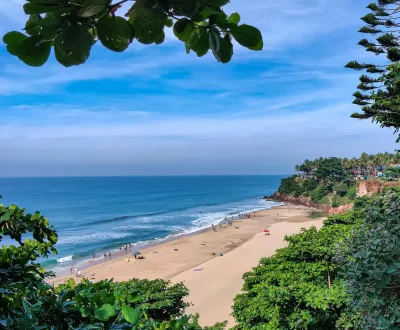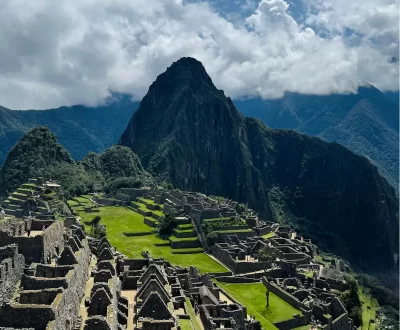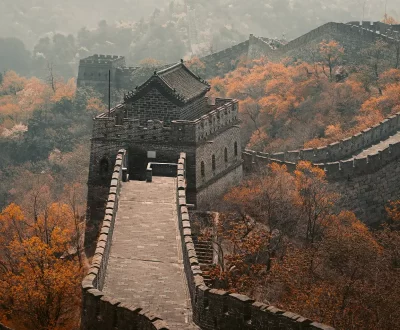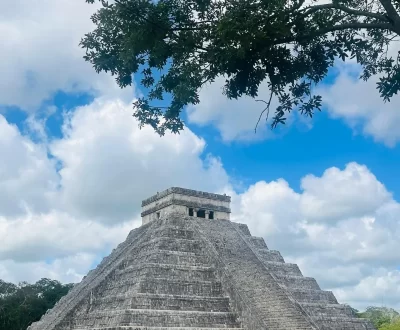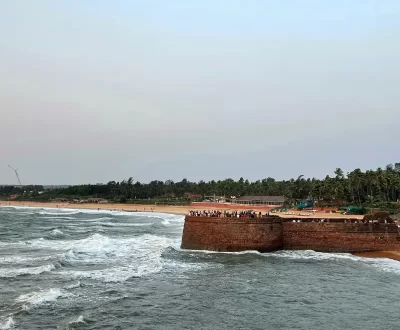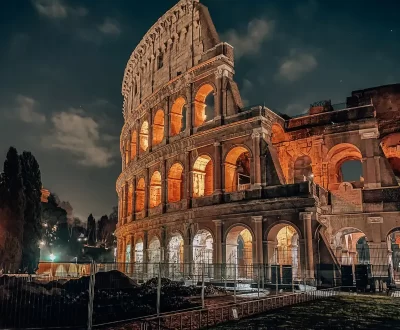The Taj Mahal is the most famous monument depicting love. It stands tall and beautiful on the banks of the Yamuna River in Agra, India. This mausoleum, made of ivory-white marble, is the best example of Mughal architecture. Its stunning beauty and romantic history continue to inspire millions of visitors every year.
The Love Story of Shah Jahan and Mumtaz Mahal
Emperor Shah Jahan had this beautiful mausoleum built in 1631 after his wife Mumtaz Mahal died giving birth. Many people think that their deep love story led to the building of the most beautiful building ever built, which was meant to be a copy of Mumtaz Mahal’s heavenly paradise on Earth.
Bibadal Khan, an imperial goldsmith, wrote this line: “May the home of Mumtaz Mahal be paradise.” This poetic vision guided the whole design of the building, which was meant to honor eternal love and show off the Mughal Empire’s artistic and economic power.
Elements of Mughal architecture and design
The Taj Mahal is a great example of Indo-Islamic architecture because it combines Persian, Turkish, and Indian design elements into a beautiful whole. Four smaller domes and thin minarets surround the main dome, which is 115 feet high. This creates perfect symmetry.
The main mausoleum is 240 feet tall on each side and is built on a raised marble platform that raises it above the gardens around it. This architectural arrangement makes the building look like it floats above earthly concerns and reaches for heaven.
How they Build it?
Around 1632, construction began and more than 20,000 workers from India, Persia, the Ottoman Empire, and Europe were hired. Ustad Ahmad Lahauri, the chief architect, was an Indian of Persian descent. He was in charge of the 22-year-long project that involved a lot of hard work.
By 1638–39, the main mausoleum was finished. By 1643, the buildings around it were finished, and the decorative work went on until at least 1647. The whole 42-acre complex was finished in 1653, and it cost about 32 million rupees, which is more than $800 million today.
Inlays of white marble and precious stones
The building is made of white marble from Makrana, Rajasthan, and red sandstone from Fatehpur Sikri. Twenty-eight kinds of precious and semi-precious stones were brought in from all over the world. These included jade from China, turquoise from Tibet, lapis lazuli from Afghanistan, and sapphire from Sri Lanka.
There are thousands of triangular soapstone tiles that make beautiful geometric patterns and flower designs on the marble surfaces. These inlays show amazing craftsmanship, with stones cut and polished so perfectly that the decorative parts look painted instead of inlaid.
Water Features and Geometric Gardens
The traditional Mughal garden design makes the idea of a paradise on earth by using a four-part layout that stands for the four rivers of paradise. Long water channels separate the different parts of the geometric garden, and reflecting pools show how beautiful the main mausoleum is.
In Islamic garden symbolism, cypress trees stand for death and eternity, while fruit trees stand for life and rebirth. These carefully planned landscapes make the mausoleum more spiritually important by giving it beauty on Earth.
Details about Islamic art and calligraphy
The Taj Mahal’s surfaces are covered in intricate calligraphy that includes verses from the Quran. This gives the building both spiritual and aesthetic meaning. Master calligrapher Amanat Khan made these inscriptions in thuluth script, which looks the same even though the letters are different sizes depending on how high you look at them.
Islamic art principles that avoid figurative representation while making complex mathematical beauty can be seen in geometric patterns and arabesque designs. These decorative pieces turn the surfaces of buildings into places to meditate on the spiritual.
Colors that change during the day
As the sun moves across the sky during the day, the marble surfaces of the Taj Mahal change color in magical ways. At dawn, soft pink colors show up, at noon, bright white colors take over, at sunset, warm golden colors show up, and at night, blue-silver colors show up.
The different colors were meant to show how grief, hope, and eternal love can change. Photographers and visitors plan their trips to catch these amazing color changes that make the monument more powerful emotionally.
UNESCO World Heritage
In 1983, UNESCO named the Taj Mahal (Monument of Love) a World Heritage Site because it is “the jewel of art in India and one of the masterpieces of world heritage that everyone loves.” This status honors both the building’s beauty and its importance as a symbol of India’s rich history.
The monument was chosen as one of the New Seven Wonders of the World in 2007, which solidified its status as the greatest work of architecture in the world, symbolizing love, beauty, and artistic perfection.
Tourism
The Taj Mahal is India’s most popular tourist spot, drawing 7 to 8 million people each year. Visitors come through the beautiful red sandstone gate that frames the first stunning view of the white marble mausoleum.
Different times of day offer different experiences, from the calm of sunrise to the romance of a full moon night. The monument looks different in different seasons and weather, so no two visits are the same.
The Taj Mahal (Monument of Love) is more than just a great piece of architecture; it is the greatest expression of love turned into stone and marble. This beautiful mausoleum continues to inspire people with its perfect proportions, beautiful craftsmanship, and deeply moving love story that has touched people from all over the world and throughout history. The Taj Mahal is a building that people love for its beauty, its history, or its romantic meaning. It is a place that stays with you and shows what can be done with art when love is the main idea.
Explore Christ the Redeemer in Brazil one of the new 7 wonders of the world
Want to experience breathtaking views of Taj Mahal from the comfort of your hotel then you should definitely book Oberoi Amarvilas Resort Agra
More from our blog
See all postsRecent Posts
- Places to visit in Varkala 3 September, 2025
- Taj Mahal the Monument of Love 3 September, 2025
- Lost City of the Incas Machu Picchu Peru 3 September, 2025


